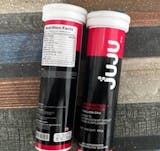When it comes to losing weight, many people wonder whether they should focus on cardio or strength training. Each type of exercise offers unique benefits, and understanding their roles can help you make the best choice for your weight loss journey. This article explores the advantages of both cardio and strength training, how they can work together, and the importance of a balanced approach to exercise and diet.
The Role of Cardio in Weight Loss Training
Benefits of Cardiovascular Exercise
Cardio exercises are great for burning calories and improving heart health. They can help you lose weight effectively by increasing your heart rate and metabolism. Here are some key benefits:
- Burns calories: Cardio workouts generally burn more calories than strength training.
- Improves heart health: Regular cardio strengthens your heart and lungs.
- Boosts mood: Cardio can help reduce stress and anxiety, making you feel better overall.
Recommended Cardio Guidelines
To see results, aim for at least 150 minutes of moderate-intensity cardio each week. This can be broken down into:
- 30 minutes, five days a week
- 75 minutes of vigorous activity spread throughout the week
- Shorter sessions, like three 10-minute workouts, if you're short on time
Types of Cardio Workouts
There are many ways to get your cardio in. Here are some popular options:
- Running or jogging: Great for burning calories quickly.
- Cycling: A low-impact option that’s easy on the joints.
- Swimming: A full-body workout that’s also fun.
- Jump rope: An effective way to get your heart rate up in a short time.
Cardio is essential for weight loss, but it’s most effective when combined with strength training. Both types of exercise work together to help you achieve your goals.
In summary, cardio plays a vital role in weight loss training. It helps you burn calories, improves your heart health, and can boost your mood. To maximize your results, combine cardio with strength training for the best outcomes.
The Importance of Strength Training for Weight Loss
Building Lean Muscle Mass
Strength training is essential for weight loss because it helps build lean muscle mass. The more muscle you have, the higher your metabolism, which means you burn more calories even when you're not exercising. This is crucial for losing weight and keeping it off. Here are some key points about building muscle:
- Increases your resting metabolic rate.
- Helps your body burn more fat than muscle.
- Reduces the risk of injuries.
Strength Training Guidelines
To get the most out of strength training, aim for:
- 1 hour of strength training 3 to 5 times a week.
- Rest at least one day between sessions to allow your muscles to recover.
- Focus on different muscle groups each session to avoid overworking any one area.
Types of Strength Training Exercises
There are many ways to incorporate strength training into your routine. Here are some effective exercises:
- Lifting weights (dumbbells or barbells).
- Using resistance bands.
- Bodyweight exercises like push-ups and squats.
- Pilates and yoga for core strength.
- Climbing stairs or using a stair machine.
Strength training is not just about lifting weights; it’s about improving your overall strength and endurance. Incorporating it into your routine can lead to better weight loss results.
Combining Cardio and Strength Training for Optimal Results
Why a Combination Works Best
To achieve the best results in weight loss, combining cardio and strength training is essential. Each type of exercise offers unique benefits that, when combined, can lead to more effective fat loss and muscle gain. Here are some reasons why this combination works:
- Burns more calories: Cardio helps you burn calories quickly, while strength training builds muscle, which burns calories even at rest.
- Improves overall fitness: Mixing both types of workouts enhances your endurance and strength, making daily activities easier.
- Prevents workout boredom: Switching between cardio and strength keeps your routine fresh and exciting.
Sample Workout Schedules
Here’s a simple weekly schedule that combines both cardio and strength training:
| Day | Activity |
|---|---|
| Monday | 30 min Cardio |
| Tuesday | Strength Training (Full Body) |
| Wednesday | 30 min Cardio |
| Thursday | Strength Training (Upper Body) |
| Friday | 30 min Cardio |
| Saturday | Strength Training (Lower Body) |
| Sunday | Rest or Light Activity |
Balancing Cardio and Strength Training
To find the right balance, consider these tips:
- Listen to your body: Adjust the intensity and duration based on how you feel.
- Set clear goals: Decide if you want to focus more on weight loss or muscle gain, and adjust your routine accordingly.
- Stay consistent: Aim for at least 150 minutes of cardio and two days of strength training each week.
Combining cardio and strength training can lead to better body composition changes. This means you can lose weight while also gaining muscle, which is beneficial for overall health.
In summary, integrating both cardio and strength training into your fitness routine can maximize your weight loss efforts and improve your overall health.
High-Intensity Interval Training (HIIT) for Weight Loss
What is HIIT?
High-Intensity Interval Training, or HIIT, is a workout style that alternates between short bursts of intense exercise and low-intensity recovery periods. This method allows you to get a great workout in a shorter amount of time.
Benefits of HIIT
- Burns calories quickly: HIIT can help you burn a lot of calories in a short time. Studies show that you can burn about 485 calories in just 45 minutes of HIIT.
- Time-efficient: Most HIIT workouts last only 10 to 30 minutes, making it easier to fit into a busy schedule.
- Variety of exercises: You can do HIIT with many activities, like running, biking, or even jumping rope.
HIIT vs. Traditional Cardio
| Type of Exercise | Duration | Calories Burned (approx.) |
|---|---|---|
| HIIT | 30 mins | 300 |
| Traditional Cardio | 30 mins | 300 |
Research shows that HIIT can burn 25-30% more calories than traditional cardio in the same amount of time. This means you can achieve similar results in less time.
Summary
HIIT is a powerful way to burn calories quickly. It combines intense exercise with rest, making it effective for weight loss. Prepare to torch fat and shed serious weight with HIIT workouts!
Diet and Exercise: A Holistic Approach to Weight Loss
The Role of Diet in Weight Loss
A balanced diet is crucial for effective weight loss. Eating healthy foods helps you manage your weight better. Here are some key points to consider:
- Focus on whole foods like fruits, vegetables, and whole grains.
- Limit processed foods and sugary drinks.
- Stay hydrated by drinking plenty of water.
Combining Diet with Exercise
Combining a healthy diet with regular exercise is essential for long-term success. Studies show that people who follow both a diet and an exercise plan lose more weight than those who only change their diet. Here’s how to do it:
- Set realistic goals for both diet and exercise.
- Track your food intake and physical activity.
- Adjust your plan as needed to stay on track.
Long-Term Weight Management Strategies
Maintaining weight loss requires ongoing effort. Here are some strategies to help you keep the weight off:
- Continue to eat a balanced diet.
- Stay active with regular exercise.
- Monitor your weight regularly to catch any changes early.
Remember, the foundations of holistic weight loss consider the entire picture of your health, including nutrition, exercise, mental well-being, and lifestyle choices. By focusing on both diet and exercise, you can achieve better results and maintain them over time.
Common Myths About Weight Loss Training
Myth: Cardio is Enough for Weight Loss
Many people believe that doing only cardio will help them lose weight. This is a misconception. While cardio can burn calories, it’s not the only way to achieve weight loss. Strength training is also crucial because it builds muscle, which helps burn more calories even when you're not exercising.
Myth: Strength Training Makes You Bulky
Another common myth is that strength training will make you bulky. In reality, building muscle can help you achieve a toned look. Most people, especially women, do not have the hormones to gain large amounts of muscle mass easily. Instead, strength training helps in burning fat and improving body composition.
Myth: More Exercise Equals More Weight Loss
Some think that exercising more will always lead to more weight loss. However, this isn’t always true. Over-exercising can lead to fatigue and injuries, which may hinder your progress. It’s important to find a balance between cardio and strength training for effective weight loss.
Remember, a balanced approach to exercise is key to successful weight loss. Combining cardio and strength training can yield better results than focusing on just one type of exercise.
| Myth | Reality |
|---|---|
| Cardio is Enough | Strength training is also essential for weight loss. |
| Strength Training Makes You Bulky | It helps in burning fat and improving body composition. |
| More Exercise Equals More Weight Loss | Balance is crucial; over-exercising can be counterproductive. |
Key Takeaways
- Cardio exercises help burn calories quickly, making them great for weight loss.
- Strength training builds muscle, which can boost your metabolism and help you burn more calories even at rest.
- Combining cardio and strength training is often the most effective approach for losing weight and improving body composition.
- High-Intensity Interval Training (HIIT) offers a time-efficient way to achieve the benefits of both cardio and strength workouts.
- A balanced diet is crucial for weight loss; exercise alone is not enough.
Final Thoughts on Cardio and Strength Training for Weight Loss
In conclusion, both cardio and strength training play important roles in losing weight. Cardio helps you burn calories quickly, while strength training builds muscle, which can help you burn more calories even when you're not working out. The best approach for weight loss is to combine both types of exercise. This way, you can enjoy the benefits of each and create a balanced routine. Remember, it's also important to eat healthy and stay consistent with your workouts. Finding activities you enjoy will make it easier to stick with your plan and reach your weight loss goals.
Frequently Asked Questions
What type of exercise is better for losing weight, cardio or strength training?
Both cardio and strength training are important for losing weight. Cardio helps burn calories quickly, while strength training builds muscle, which helps you burn more calories even when resting.
How often should I do cardio for weight loss?
Aim for at least 150 minutes of moderate cardio each week. This can be broken down into 30 minutes a day, five days a week.
Can strength training help me lose weight?
Yes! Strength training builds muscle, which can increase your metabolism and help you burn more calories throughout the day.
Is it okay to do cardio and strength training on the same day?
Yes, many people combine both types of exercise in one day. Just make sure to listen to your body and give yourself enough rest.
What is HIIT and how does it help with weight loss?
HIIT stands for High-Intensity Interval Training. It involves short bursts of intense exercise followed by rest. This method can burn a lot of calories in a short amount of time.
Do I need to change my diet to lose weight?
Yes, diet plays a big role in weight loss. Eating fewer calories than you burn is important, so focus on healthy foods while exercising.









